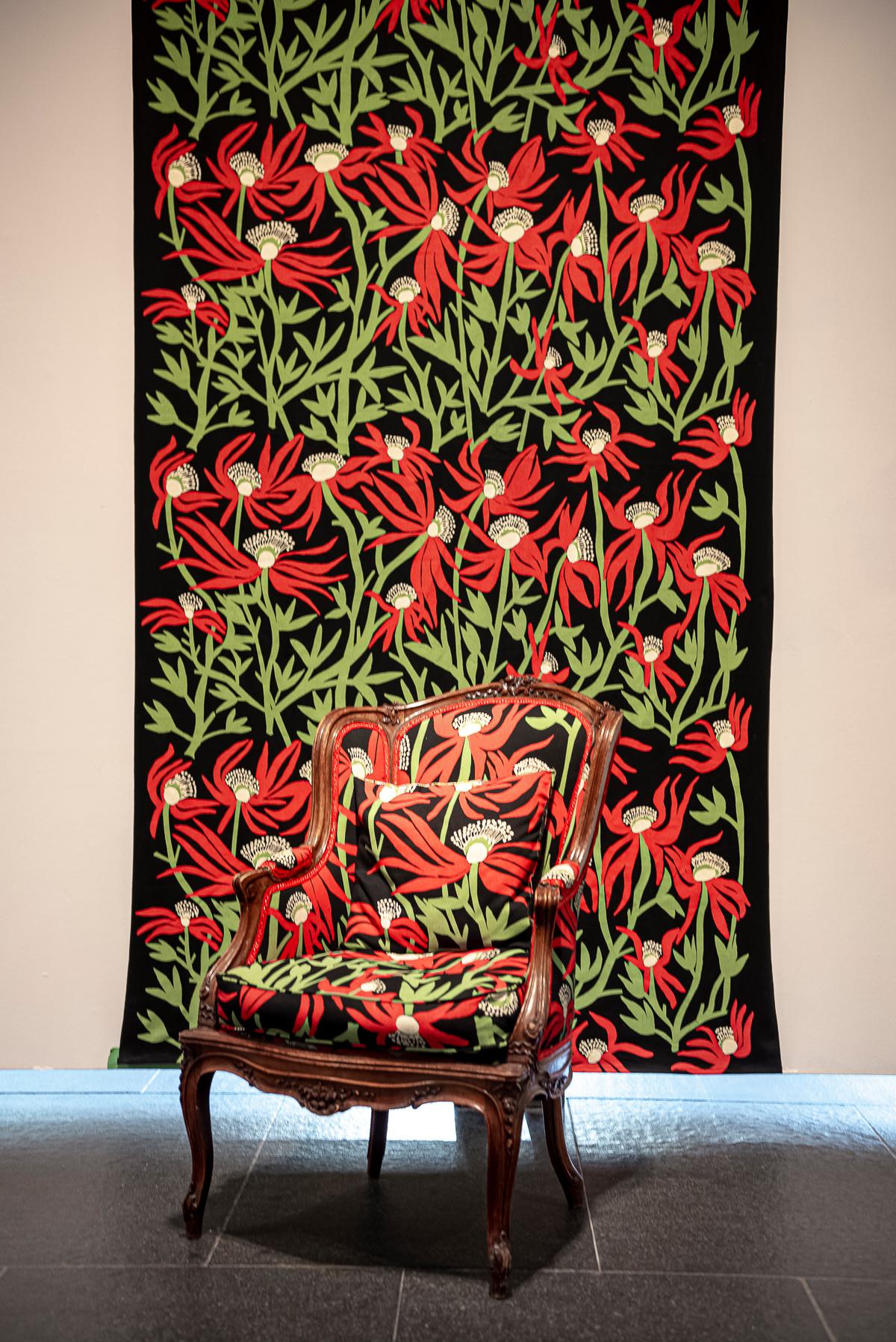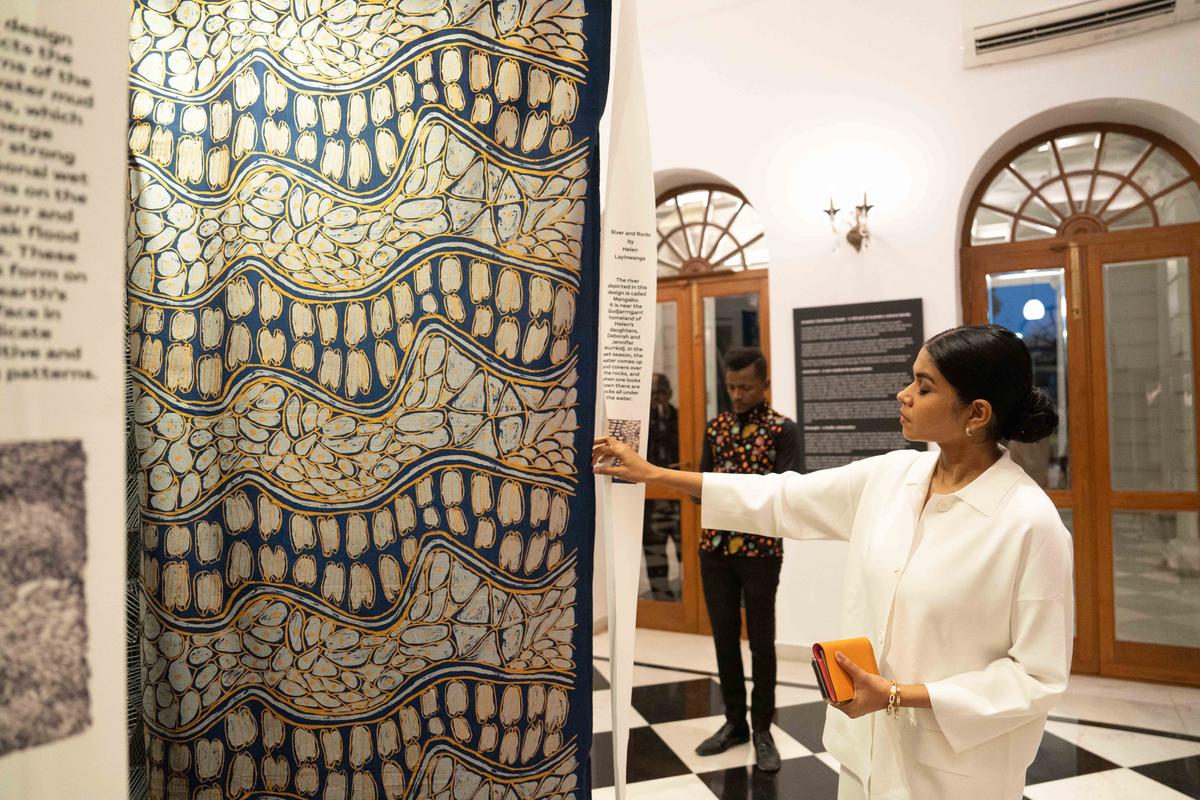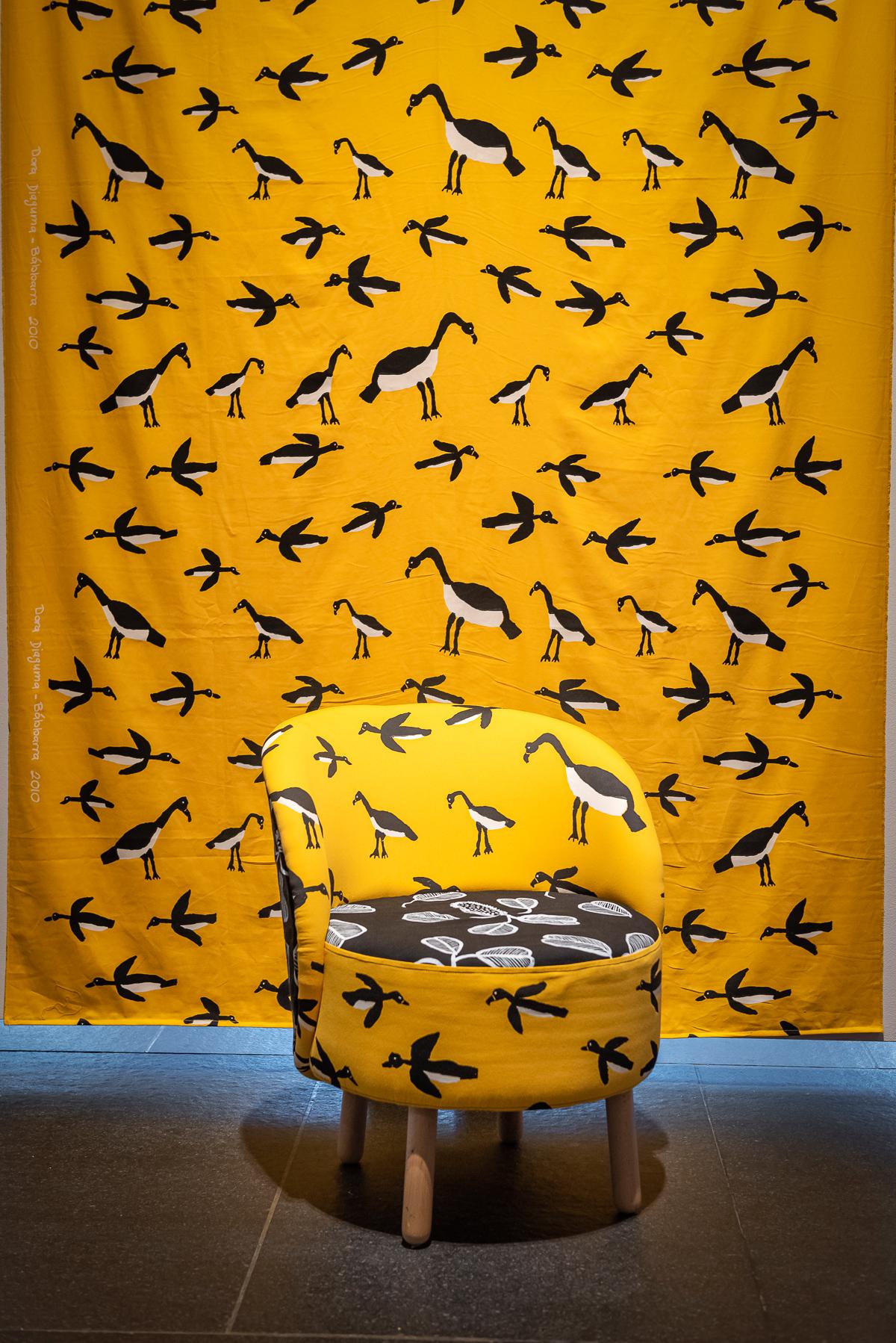
Australian Aboriginal textile art on display at Kingsley
| Photo Credit: SPECIAL ARRANGEMENT
A gaggle of magpie geese float across a bright, almost blinding yellow fabric suspended from ceiling-high spokes, among all the neatly-stacked Kanjeevarams in Kingsley. The fabric is one of many brightly-hued pieces with abundant and unusual motifs that remain as centerpieces in the building known for its arched windows, checkered floors and colonial character. Chennai is perhaps unfamiliar with the stories behind the pieces, for they come all the way from the First Nations cultures of Australia: the first peoples of Australia, who have existed for thousands of years prior to colonisation.
The magpie geese or murnubbarr karrolka as they call it, fly long distances in the wet seasons, and are characteristic of the Kakadu and Western Arnhem Land where they are often found. For Dora Daiguma, an aboriginal artist hailing from Arnhem, they signify her land, surroundings and childhood memories. Suspended adjacently is another piece that carries an earthy red hue, dotted by amorphous, rather fibrous shapes — Bah-je by Linda Guruwana. Bah-je translates to hunting bag in Djinang, one of more than 250 indigenous languages in Australia.

From the Paris installation
| Photo Credit:
Andrew McLeish
The well-displayed installation titled Jarrachara is an invitation to simply absorb the stories of First Nations’ cultures as told through a medium as intimate as textile. Jarrachara is a distinctive cool wind that blows across Arnhem Land in Australia’s far north in the dry season. It signifies ‘ceremonial coming together’. The installation has 24 screen-printed textiles created by 15 female First Nations artists, all part of Babbara Women’s Centre (set up in 1987) based in Maningrida — a regional community in the Northern territory of Australia. They are punctuated by a few framed, wood-cut prints done in collaboration with Tharangini Studio in Bengaluru.
The beginnings
The earliest forms of Aboriginal art were rock carvings and paintings, body painting and ground designs. Sarah Kirlew, Australian Consul-General for South India says, “There are engravings on cave walls in Arnhem Land dating back 60,000 years. Placing the art on canvas and board began about 50 years ago. Today Aboriginal art is done in an expanding range of mediums, including, as in this exhibition, textiles.”

From the opening day
| Photo Credit:
SPECIAL ARRANGEMENT
Jessica Rosalie Stalenberg of Babbarra Designs says that artists from over 12 language groups from the Maningrada region come together at the centre. “These artists design and hand-print unique textiles telling the ancestral stories of Arnhem Land Country, history, and cultures. Many of Bábbarra’s artists — Susan Marawarr, Jennifer Wurrkidj, Deborah Wurrkidj and Helen Lanyinwanga — attribute their artistic education to the world-renowned artists in their families, including some of Australia’s finest bark painters: James Iyuna, Mary Marabamba, and Lena Kuriniya,” she adds.
Most of the artworks and allied motifs share knowledge about, simply, their life: traditional bush foods, and harvest such as cheeky yam, long yam, dugong (marine mammal), barramundi (Asian sea bass) and long-necked turtles make appearances. Jessica continues, “Traditional life in saltwater and freshwater country is explored in the medium. Dilly bags and woven fish traps and other objects traditionally made by women to collect food and carry children are depicted. The stories also include creation spirits — [that appear in creation stories] such as mimihs, yawkyawk (mermaid spirits), djomi (mermaid) and other women’s creation stories specific to this region in Arnhem Land. The designs share the plants and animals unique to this region.”
Much contemporary First Nations art is based on important ancient stories centered on ‘the Dreamtime’ or ‘The Dreaming’— the period in which Indigenous people believe the world was created, says Sarah. “The Dreamtime stories have been handed down through generations,” she says.

From the Paris installation
| Photo Credit:
Andrew McLeish
The objective of bringing this installation to Chennai is to share cultures, some unknown to many. “It is important to note that First Nations art is a continually evolving cultural practice,” concludes Sarah.
As a steady stream of viewers waltzed through the maze made of fabric on opening day, they often paused to read and reflect on the story that accompanied them. Though the art in itself sets off conversations on colours, textures, motifs and meaning, the context catapults its importance as First Nations, women-made art.
Jarrachara is on view till April 17 at Kingsley, Spur Tank Road, Chennai.
For all the latest Entertainment News Click Here
For the latest news and updates, follow us on Google News.
